 W
WBetty Lise Anderson is an American electrical engineer, working in the field of photonics. She has been a professor at the Ohio State University since 1990. She is a Fellow of SPIE, and a Senior Member of the Optical Society of America and of the Institute of Electrical and Electronics Engineers.
 W
WArthur Ashkin was an American scientist and Nobel laureate who worked at Bell Laboratories and Lucent Technologies. Ashkin has been considered by many as the father of optical tweezers, for which he was awarded the Nobel Prize in Physics 2018 at age 96, becoming the oldest Nobel Laureate until 2019 when John B. Goodenough was awarded at 97. He resided in Rumson, New Jersey.
 W
WNikolay Gennadiyevich Basov was a Soviet physicist and educator. For his fundamental work in the field of quantum electronics that led to the development of laser and maser, Basov shared the 1964 Nobel Prize in Physics with Alexander Prokhorov and Charles Hard Townes.
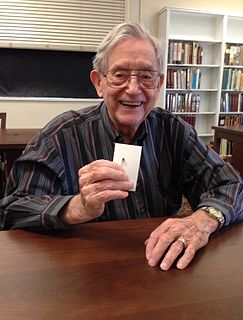 W
WJames R. "Bob" Biard is an American electrical engineer and inventor who holds 73 U.S. patents. Some of his more significant patents include the first infrared light-emitting diode (LED), the optical isolator, Schottky clamped logic circuits, silicon Metal Oxide Semiconductor Read Only Memory, a low bulk leakage current avalanche photodetector, and fiber-optic data links. He has been on the staff of Texas A&M University as an Adjunct Professor of Electrical Engineering since 1980.
 W
WWilliam B. Bridges is the Carl F Braun Professor of Engineering, Emeritus, and Professor of Electrical Engineering and Applied Physics in the Engineering and Applied Science division at the California Institute of Technology. Born in Inglewood, California, he is the discover/inventor of the Argon Ion laser, and holds the patent for the Ionized Noble Gas Laser.
 W
WRobert Louis Byer is a physicist. He was president of the Optical Society of America in 1994 and of the American Physical Society in 2012.
 W
WClaude Cohen-Tannoudji is a French physicist. He shared the 1997 Nobel Prize in Physics with Steven Chu and William Daniel Phillips for research in methods of laser cooling and trapping atoms. Currently he is still an active researcher, working at the École normale supérieure (Paris).
 W
WRonald William Prest Drever was a Scottish experimental physicist. He was a professor emeritus at the California Institute of Technology, co-founded the LIGO project, and was a co-inventor of the Pound–Drever–Hall technique for laser stabilisation, as well as the Hughes–Drever experiment. This work was instrumental in the first detection of gravitational waves in September 2015.
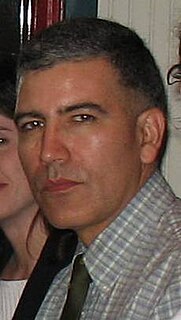 W
WFrancisco Javier "Frank" Duarte is a laser physicist and author/editor of several well-known books on tunable lasers and quantum optics. He introduced the generalized multiple-prism dispersion theory, has discovered various multiple-prism grating oscillator laser configurations, and pioneered polymer-nanoparticle gain media. His contributions have found applications in a variety of fields including astronomical instrumentation, atomic vapor laser isotope separation, geodesics, gravitational lensing, laser medicine, laser microscopy, laser pulse compression, laser spectroscopy, nonlinear optics, and tunable diode lasers.
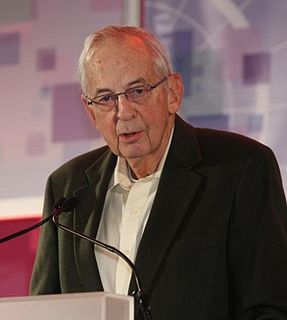 W
WJames Power Gordon was an American physicist known for his work in the fields of optics and quantum electronics. His contributions include the design, analysis and construction of the first maser in 1954 as a doctoral student at Columbia University under the supervision of C. H. Townes, development of the quantal equivalent of Shannon's information capacity formula in 1962, development of the theory for the diffusion of atoms in an optical trap in 1980, and the discovery of what is now known as the Gordon-Haus effect in soliton transmission, together with H. A. Haus in 1986. James P. Gordon was a member of the National Academy of Engineering and the National Academy of Science.
 W
WGordon Gould was an American physicist who is often credited with the invention of the laser.. Gould is best known for his thirty-year fight with the United States Patent and Trademark Office to obtain patents for the laser and related technologies. He also fought with laser manufacturers in court battles to enforce the patents he subsequently did obtain.
 W
WAvraham (Avi) Gover is an Israeli professor of Electrical Engineering in the Physical Electronics Department of the Engineering Faculty at Tel Aviv University, specializing in Quantum Electronics and FEL Physics. Gover is also the head of the Israeli Center for Radiation Sources and Applications in Ariel. In 2005, he was awarded the international FEL prize "in recognition for his outstanding contributions to Free Electron Laser science and technology".
 W
WJohn Lewis "Jan" Hall is an American physicist, and Nobel laureate in physics. He shared the 2005 Nobel Prize in Physics with Theodor W. Hänsch and Roy Glauber for his work in precision spectroscopy.
 W
WTheodor Wolfgang Hänsch is a German physicist. He received one fourth of the 2005 Nobel Prize in Physics for "contributions to the development of laser-based precision spectroscopy, including the optical frequency comb technique", sharing the prize with John L. Hall and Roy J. Glauber.
 W
WNick Holonyak Jr. is an American engineer and educator. He is noted particularly for his 1962 invention of a light-emitting diode (LED) that emitted visible red light instead of infrared light; Holonyak demonstrated the LED on October 9, 1962 while working at General Electric's research laboratory in Syracuse, New York. He is a John Bardeen Endowed Chair Emeritus in Electrical and Computer Engineering and Physics at the University of Illinois at Urbana-Champaign, where he has been since leaving General Electric in 1963.
 W
WAli Javan was an Iranian-American physicist and inventor. He was the first to propose the concept of the gas laser in 1959 at the Bell Telephone Laboratories. A successful prototype, constructed by him in collaboration with W. R. Bennett, Jr., and D. R. Herriott was demonstrated in 1960. His other contributions to science have been in the fields of quantum physics and spectroscopy.
 W
WShaukat Hameed Khan PP, PhD, FPAS, is a Pakistani optical physicist and a visiting professor of physics at the Comsats University in Islamabad. Khan is known for his understanding in spark gap and plasma-induced Lasers in ionized environment.
 W
WHerwig Kogelnik is an Austrian-American electrical and optical engineer. He is best known for his fundamental contributions to the developments in laser technology, optoelectronics, photonics and lightwave communications systems. His work over a 40-year career at Bell Labs earned him the Marconi Prize, the IEEE Medal of Honor, the National Medal of Technology and many other awards. In a series of papers in the early 1960s, he developed the theory of stable optical resonators, which has been fundamental to laser developments ever since. He then turned to the applications of holograms to optical systems, developing with some of his colleagues the basic theory of thick holograms that led to the development of a whole range of optical components, including filters and couplers to integrated optical devices. His innovation was the beginning of the "distributed feedback laser." He also contributed the development of wavelength-division multiplexing.
 W
WWillis Eugene Lamb Jr. was an American physicist who won the Nobel Prize in Physics in 1955 "for his discoveries concerning the fine structure of the hydrogen spectrum." The Nobel Committee that year awarded half the prize to Lamb and the other half to Polykarp Kusch, who won "for his precision determination of the magnetic moment of the electron." Lamb was able to determine precisely a surprising shift in electron energies in a hydrogen atom. Lamb was a professor at the University of Arizona College of Optical Sciences.
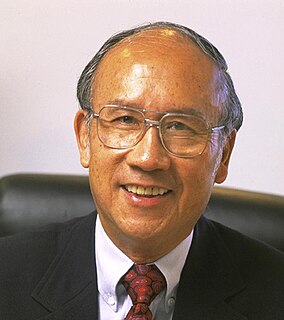 W
WTingye Li was a Chinese-American scientist in the fields of microwaves, lasers and optical communications. His innovative work at AT&T pioneered the research and application of lightwave communication, and has had a far-reaching impact on information technology for over four decades.
 W
WJohn M. J. Madey was a professor of Physics at the University of Hawaii at Manoa, a former director of the Free Electron Laser Laboratory at Duke University, and formerly a professor (research) at Stanford University. He is best known for his development of the free-electron laser (FEL) at Stanford University in the 1970s.
 W
WTheodore Harold Maiman was an American engineer and physicist who is widely credited with the invention of the laser. Maiman's laser led to the subsequent development of many other types of lasers. The laser was successfully fired on May 16, 1960. In a July 7, 1960 press conference in Manhattan, Maiman and his employer, Hughes Aircraft Company, announced the laser to the world. Maiman was granted a patent for his invention, and he received many awards and honors for his work. His experiences in developing the first laser and subsequent related events are recounted in his book, The Laser Odyssey, republished recently under a new title The Laser Inventor: Memoirs of Theodore H. Maiman.
 W
WEric Mazur is a physicist and educator at Harvard University, and an entrepreneur in technology start-ups for the educational and technology markets. Mazur's research is in experimental ultrafast optics, condensed matter physics and peer instruction. Born in Amsterdam, Netherlands, he received his undergraduate and graduate degrees from Leiden University.
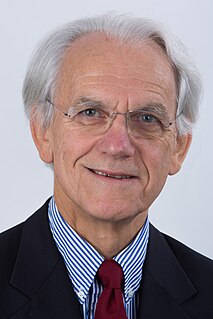 W
WGérard Albert Mourou is a French scientist and pioneer in the field of electrical engineering and lasers. He was awarded a Nobel Prize in Physics in 2018, along with Donna Strickland, for the invention of chirped pulse amplification, a technique later used to create ultrashort-pulse, very high-intensity (petawatt) laser pulses.
 W
WAlexander Mikhailovich Prokhorov was a Soviet-Russian physicist known for his pioneering research on lasers and masers in the Soviet Union for which he shared the Nobel Prize in Physics in 1964 with Charles Hard Townes and Nikolay Basov.
 W
WArthur Leonard Schawlow was an American physicist and co-inventor of the laser with Charles Townes. His central insight, which Townes overlooked, was the use of two mirrors as the resonant cavity to take maser action from microwaves to visible wavelengths. He shared the 1981 Nobel Prize in Physics with Nicolaas Bloembergen and Kai Siegbahn for his work using lasers to determine atomic energy levels with great precision.
 W
WPeter Pitirimovich Sorokin was an American Russian physicist and co-inventor of the dye laser. He was born in Boston and grew up in Winchester, Massachusetts. He attended Harvard University, receiving a BA degree in 1952 and a PhD in Applied Physics in 1958; his PhD thesis adviser was Nicolaas Bloembergen.
 W
WDonna Theo Strickland, is a Canadian optical physicist and pioneer in the field of pulsed lasers. She was awarded the Nobel Prize in Physics in 2018, together with Gérard Mourou, for the practical implementation of chirped pulse amplification. She is a professor at the University of Waterloo in Ontario, Canada.
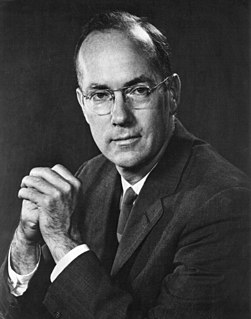 W
WCharles Hard Townes was an American physicist. Townes worked on the theory and application of the maser, for which he obtained the fundamental patent, and other work in quantum electronics associated with both maser and laser devices. He shared the 1964 Nobel Prize in Physics with Nikolay Basov and Alexander Prokhorov. Townes was an adviser to the United States Government, meeting every US President from Harry Truman (1945) to Bill Clinton (1999).
 W
WJoseph Weber was an American physicist. He gave the earliest public lecture on the principles behind the laser and the maser and developed the first gravitational wave detectors.
 W
WAmnon Yariv is an Israeli-American professor of applied physics and electrical engineering at Caltech, known for innovations in optoelectronics. Yariv obtained his B.S., M.S. and PhD. in electrical engineering from University of California, Berkeley in 1954, 1956 and 1958, respectively.